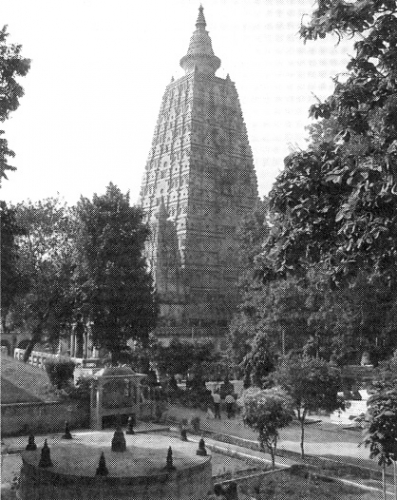For all its recent growth, the Buddhist pilgrimage town of Bodh Gaya, in northeastern India, remains a relatively quiet place where one can still watch farmers plowing their fields with oxen, and the most reliable method of travel remains the railway system. It was with considerable surprise then that on a recent October afternoon I heard the unmistakable sound of a large jetliner landing nearby. Although there has been talk for some time of a new airport near Bodh Gaya, most of us who are familiar with the pace of events here had some question about when such a project would actually be completed.
The next day’s Hindustan Times confirmed that in fact an Airbus 320 had landed at the renovated Gaya/Bodh Gaya airport, completing a test flight from Calcutta, which is only forty-five minutes away by air. A few weeks later, the first direct flight from Colombo, Sri Lanka, brought pilgrims to Bodh Gaya, and this winter weekly flights are scheduled to arrive from Bangkok. The introduction of international jet service, along with the designation of the Mahabodhi Temple as a UNESCO World Heritage site earlier this year, are significant events in the history of the town. Buddhist leaders hope that the new international visibility and accessibility of Bodh Gaya will help to strengthen the dharma, while the local people anticipate a much-needed growth spurt in the region’s economy.

Bodh Gaya is the site of Buddha Shakyamuni’s enlightenment and is viewed by Buddhists as the most important pilgrimage place associated with his life. The Vajrasana (diamond throne), marking the spot where the Buddha sat in meditation under the Bodhi tree, is considered the center of the Buddhist world, and pilgrims have been traveling to Bodh Gaya since at least the third century B.C.E., when the legendary Buddhist emperor Ashoka made several elaborate state visits. The earliest archaeological remains here date from this period and the slightly later Sunga dynasty. The Mahabodhi Temple as we know it today, an imposing shrine that rises up beside the Bodhi tree and is visible for miles in all directions, was probably built in the fifth century C.E., during the Gupta period, and was described quite accurately by the seventh-century Chinese pilgrim Xuanzang: “To the east of the Bodhi tree is a Vihara between 160 and 170 feet in height. . . . It is built of bluish bricks, faced with plaster. It presents tiers of niches, each of which holds a gilded statue of Buddha.”
Bodh Gaya continued to be a thriving center of Buddhist practice and education until the thirteenth century, when the Muslim conquest of northern India effectively ended most institutional Buddhist activity in this area. While other similar brick temples in northern India have fallen into complete ruin, the Mahabodhi Temple has survived, thanks to the repairs made periodically over the centuries primarily by Burmese and Chinese pilgrims. The most recent renovation of the temple was initiated by King Mindon of Burma in 1877 and completed by the British archaeologist Sir Alexander Cunningham in 1882.
This year the Mahabodhi Temple Management Committee has begun restoration work on the temple under the supervision of the Archeological Survey of India. In conversations with Bhikkhu Bodhipala, the head monk of the temple, I was intrigued to learn that the badly damaged 120-year-old cement coating of the brick temple is now being carefully replaced with a plaster made to ancient specifications. The recipe includes brick dust, lime, brown sugar, coconut husk fiber, and other natural components, which allow this composite plaster to last for at least one hundred years; the monsoon climate in northern India would crack cement plaster within fifty years otherwise. The fact that one can now find this ancient plaster recipe on the Web (at the Mahabodhi Temple website, www.mahabodhi.com) is a fine example of the complex weave of old and new that is evident in modern Bodh Gaya.
The population of Bodh Gaya has swelled to twenty thousand in recent years, and the town now hosts thirty modern temples representing all the major traditions of Buddhism, as well as a growing number of guesthouses, hotels, and restaurants. It is a scene that stands in dramatic contrast to the small rural village that existed here thirty years ago. Now the creak and sway of ox carts has given way to the grinding gears of tractors on the roads, and Internet venues stand alongside older market kiosks. Despite these and other changes, most people here would agree that this small town at the center of the Buddhist world continues to maintain its essential character, a place of inspiration to Buddhists the world over.